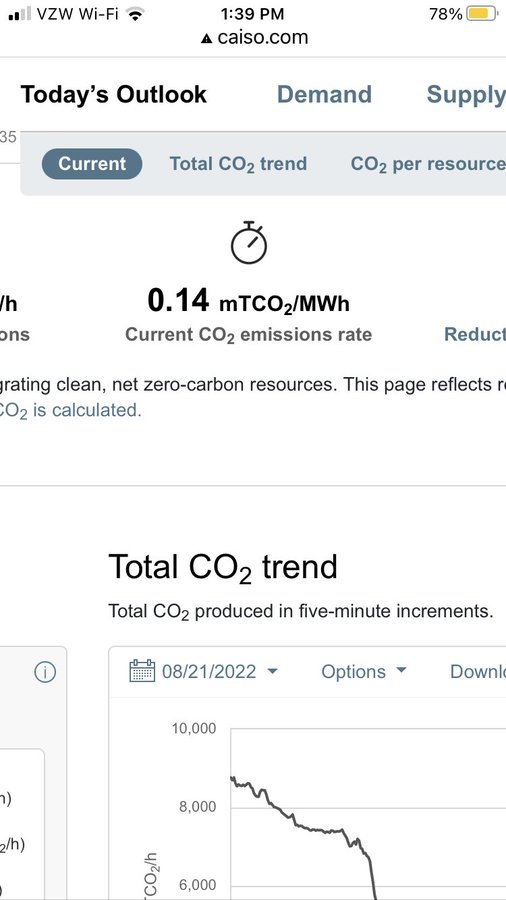Remember when I ran some numbers about my utility cycling around the South Bay (SW region of Los Angeles County)? I use a Kill A Watt meter to plug in my eBike charger so I know how much electricity I use. I also keep track of my miles so I know that I use 5-10 watt-hours/mile while running errands that I normally would do by car.
Let's use the higher 10 watt-hours/mile number for when I want to get somewhere quickly but don't want to get sweaty.
My Class 2 eBike tops out at 20 mph, but my area has a lot of stop signs and stop lights.
My Prius hybrid calculates my trip average speed and I know that I average 16-17 mph on those 3-12 mile round trip errands.
Basically, I go the same speed by car and eBike.
This is why people complain about traffic in my area. Driving speeds are slow. Alternatively, we can reframe that to "eBikes will get you there just as fast as driving, while building moderate exercise into your daily routine."
[My census tract has 17,000 people/square mi and the California DMV found that the South Bay has anomalously many cars/registered driver (over 1!). Anyway, we are a car-dependent suburb even though we have the density to support better ways of getting around. People also complain about parking. It's a problem when we own so many cars and we don't put them in our garages because our garages are stuffed with things that are not cars. Anyway, I digress.]
This post is about the carbon intensity of eBiking vs Driving.
California passes lots of regulatory laws, including one that requires us to track the carbon intensity of our electricity supply. CAISO is the public agency in charge of operating our electricity grid and they publish data from real-time statistics to year end reports to help us track whether or not we are meeting our myriad goals.
As the League of Women Voters California Energy Subcommittee team leader, I stalk the CAISO data website a lot more than the average Californian.
Visit the CAISO Emissions page and see the instantaneous CO2 intensity of the California grid.
Last Sunday, I hung out the laundry and plugged in my eBike at midday, when the grid CO2 intensity was at it's daily nadir, 0.14 mTCO2/MW. (Midday on weekends, on sunny but not overly hot days, have the lowest CO2 intensity.)
If you missed it in real-time, you can still reconstruct the CO2 intensity by downloading the 5-minute grid CO2 emissions and total system demand data for a given day, and then dividing it for the ratio. I pulled the data for Sunday, August 21 and put it in Google Sheets. LOL, I really took a screen shot at the absolute minimum for the day.
.14 kg CO2/kWh
.14 g CO2/Wh
At 10 Wh/mi, I emitted 1.4 g CO2/mile running my errands last Friday and charging at midday on Sunday.
The EPA publishes stats on GHG emissions from passenger vehicles assuming 22 mpg.
I was tweeting from my phone and mis-remembered it as 440 g/mi using 20 mpg. That's only 1% off from the actual 444 g/mi. Anyway, using the 440 number, I got a cute number of very close to 100*pi
440/1.4 = 314
Of course, I drive a hybrid and get ~40 mpg so the ratio for me driving vs eBiking is 159.
I looked at Tesla drivers' forums and it seems they use about 300 Wh/mi or 30x as much electricity as me on my eBike. If they charge only at midday, then they would be emitting 42 g/mi, which is not bad. But, if they are charging in the middle of the night, as utilities encourage them to do, then the CO2 emissions intensity doubles to 84 gCO2/mi.
Then there's the embodied emissions of producing electric cars. Their batteries are hundreds of times larger than my eBike's and about 10x the size of a plug-in hybrid.
Tesla Y: 75 kWh battery
eBike: 0.5 kWh battery
Prius Prime: 8.8 kWh battery (plug-in hybrid)
There are serious environmental issues with battery production for EVs. We're up against physical limits. We can't produce them fast enough for the fossil-fuel transition unless we drive a lot less than we currently do.
Anyway, the bottom line is to minimize your car driving, do it in an EV if you have one. Hybrids, particularly plug-in hybrids, are a decent trade-off as long as you don't drive it a lot in gasoline mode.
If you don't have solar panels, charge when your grid is cleanest. (This varies by region.) If you have solar panels, charge when your panels are producing more than the rest of your home needs.





No comments:
Post a Comment
Comments are open for recent posts, but require moderation for posts older than 14 days.